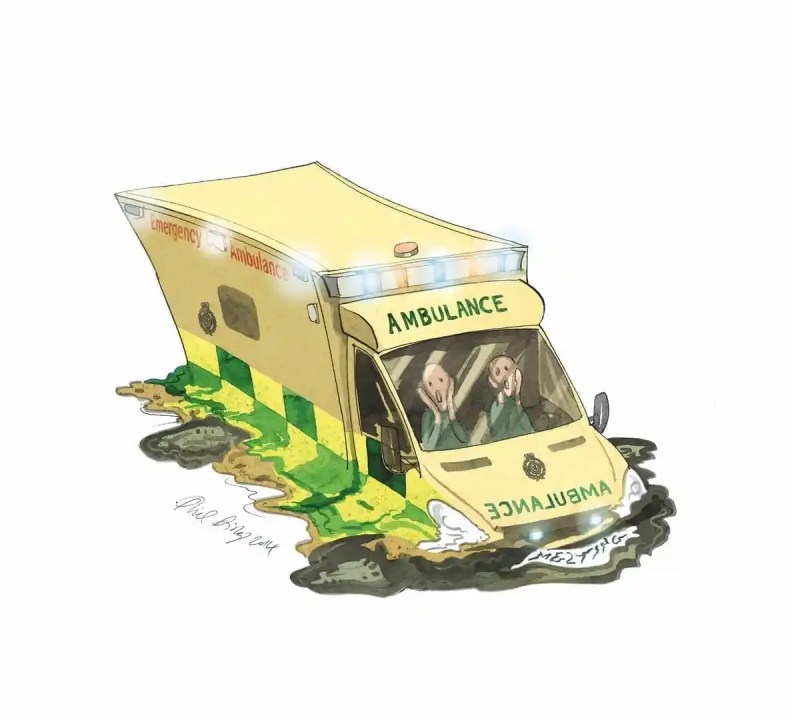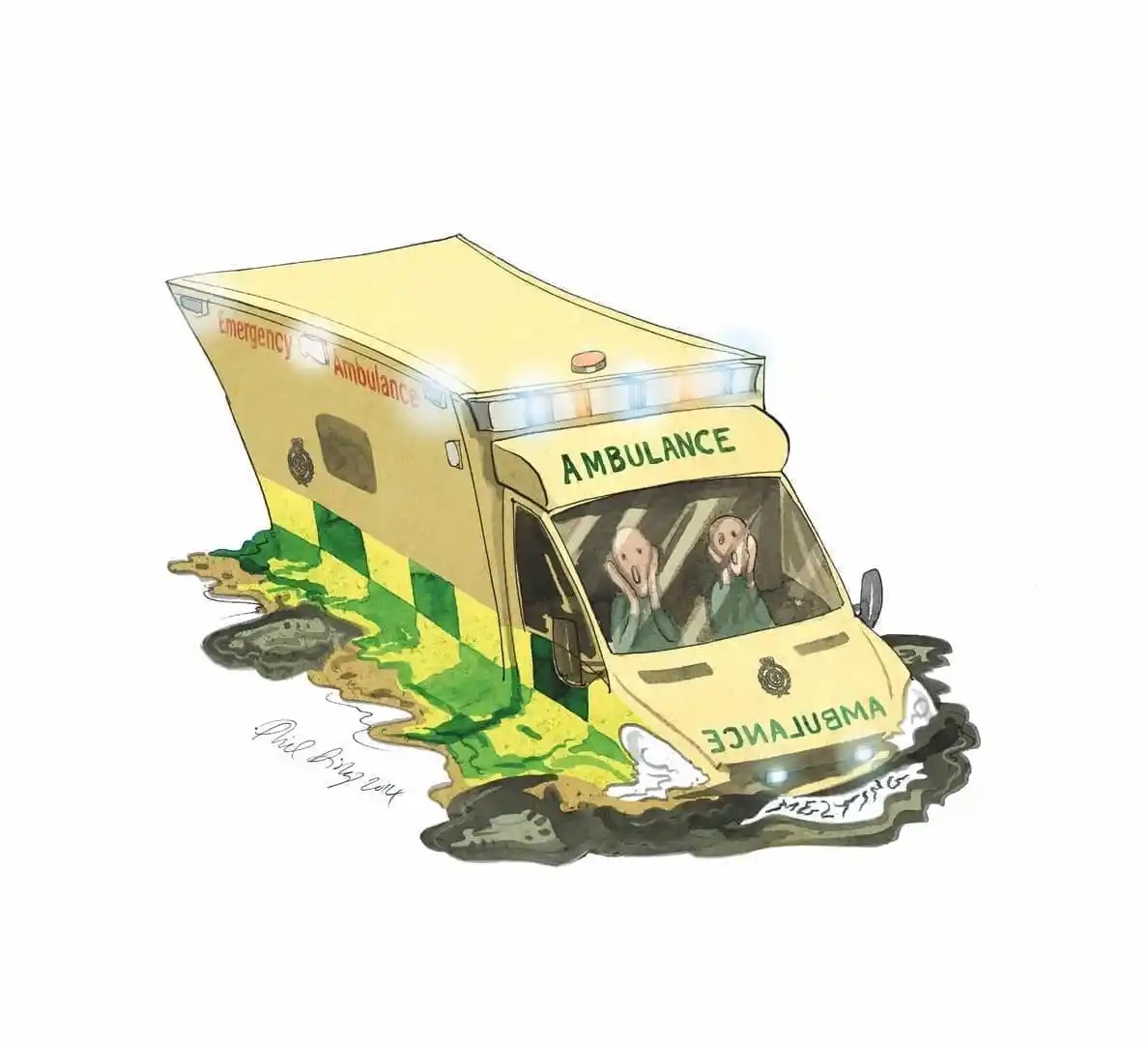Thousands of ambulance staff across England and Wales have walked out today in a dispute largely concerning pay rises. Members of the Unison, Unite and GMB unions will not be responding to emergency callouts unless they’re of the highest ‘category one’ calls, which cover immediately life-threatening conditions such as cardiac arrest. In most areas, ambulance staff will still attend ‘category two’ calls for strokes, heart attacks and ailments of that ilk, but they will be decided on a case-by-case basis.
Health Secretary Steve Barclay wrote, in an article for the Daily Telegraph this morning, that ‘ambulance unions have taken a conscious choice to inflict harm on patients’. But in a sector that is already overstretched, will the strikes make a tangible difference to patient safety – or is the country’s ambulance service already unfit for purpose?
Patients cannot be admitted to A&E because the wards are overflowing while staff are run off their feet
In the past year, the number of patients who died while being transferred from ambulances to hospital wards more than doubled – from 40 in 2020/21 to 93 in the past 12 months, according to figures from NHS England, obtained by the GMB union. The true number could be even higher, as reporting is voluntary for NHS trusts. The number of patients who suffered ‘severe harm’ (incidents that ‘appear to have resulted in permanent harm’ while in ambulances tripled to 154 cases in a year, while more than 5,000 patients came to some sort of harm on their way to hospital.
‘These shocking figures prove what our ambulance members tell us: services are less safe due to rising demand and delays,’ said Rachel Harrison, GMB national secretary. When thousands of patients are suffering injuries on the way to be treated, clearly the ambulance service is beyond broken.
Such injuries are a symptom of a service suffering the knock-on effects of an NHS near breaking point. Patients cannot be admitted to A&E because the wards are overflowing while staff are run off their feet. This is reflected in the latest figures which show that almost 38,000 patients waited longer than 12 hours to be admitted to A&E last month. Although it was a fall from October (44,000 patients) it was still far higher than pre-pandemic levels. The target is to see 95 per cent of emergency patients within four hours. Last month, the rate was just 69 per cent. The North East Ambulance Service yesterday called the first critical incident in its history. There were 245 patients needing an ambulance, but none available. Half of its 128 ambulances were stuck in queues outside hospitals.
Matthew Taylor, head of the NHS Confederation, which represents health service leaders said this morning:
‘It is right when the trade unions say even if there was no industrial action, no strikes, we’d still have a workforce crisis in the NHS, we’d still be taking twice as long as we want to take to respond to those category two calls. This is the situation we’re in.’
Barclay was asked this morning on BBC Radio 4’s Today programme how long the strikes could go on for – and the risk to patients. He said:
‘It’s beholden on the trade unions to look at the impact of patient safety’.
He also said he wouldn’t budge on pay – currently an average offer of around 4.75 per cent – because the government needs to ‘prioritise funding to clear the backlog’ left by the pandemic.
The strikes are also causing a political headache for the government, as polling shows that the public overwhelmingly supports striking NHS staff – and blames politicians for the industrial action. As Katy Balls wrote on Coffee House yesterday:
‘The Prime Minister is attempting to win the reasonableness argument. At all times, he has tried to present his government as showing reason by accepting the recommendations of the pay review body.’
Will the inevitable deaths resulting from today’s strike be a symptom of correlation or causation? With the ambulance service already so dangerously overstretched, it’s difficult to say. But what is evident is that the blame game over the responsibility for these strikes needs a swift resolution: both to improve the health service for patients and to placate staff stretched at a time of economic crisis and burned out from years of working in a system constantly on the brink of total meltdown.








Comments